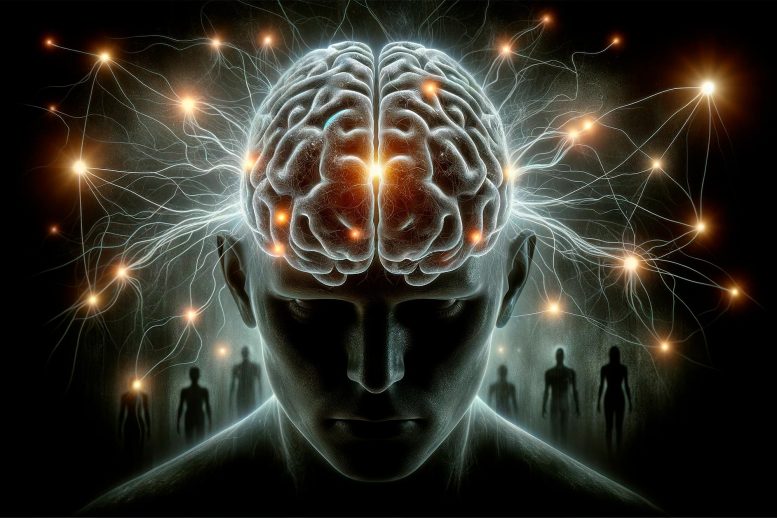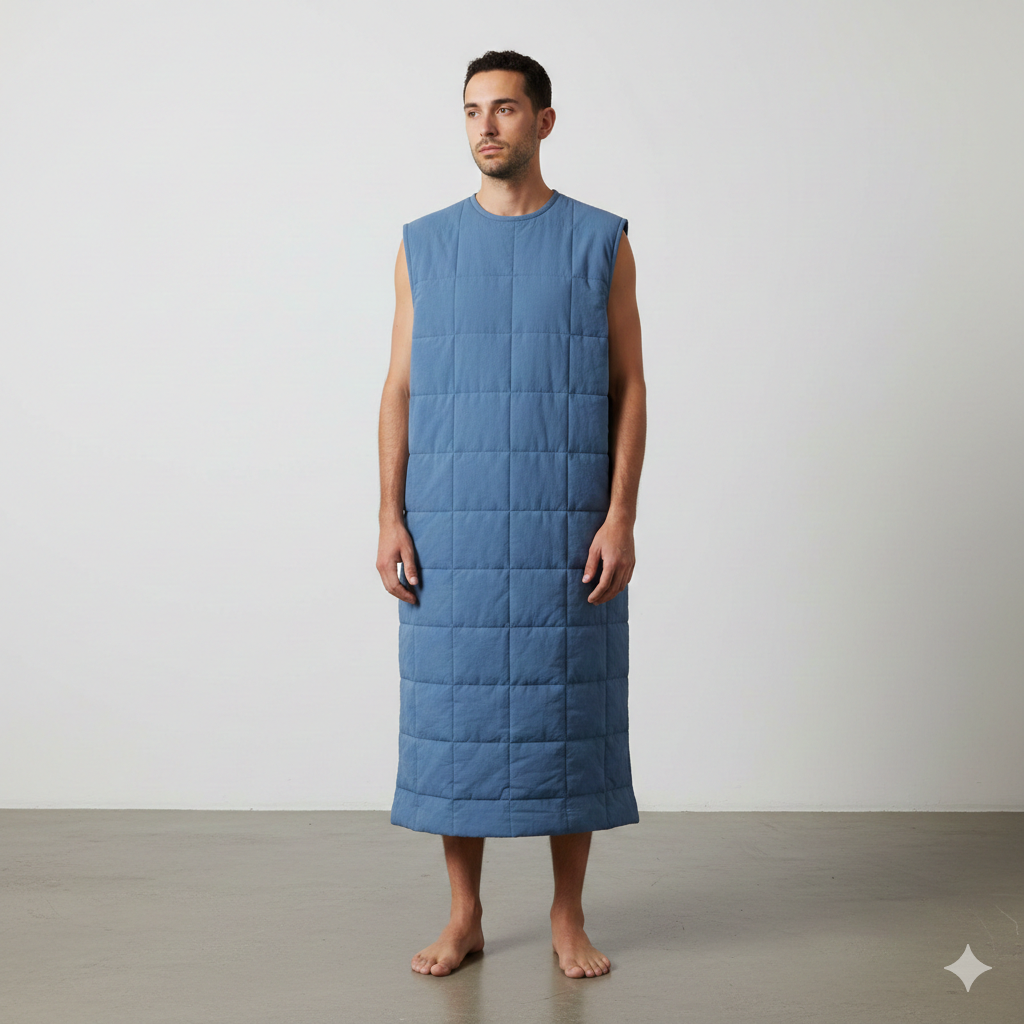Exploring Fear Engrams: Unveiling the Neuroscience Behind Memory and Behavior

Researchers from Boston University have found that the presence of fear memories can trigger varied responses in rodents based on the size of their surroundings. The study, which used optogenetics to trigger fear engrams, presents fresh insights into the flexibility of fear reactions, with potential ramifications for treating fear-related disorders. Source: SciTechDaily.com
The research, led by Boston University neuroscientist Dr. Steve Ramirez and his team, investigates how fear responses alter in different environments and the resulting consequences.
As the world struggles to navigate mental health disorders like depression, anxiety, and PTSD, this novel study led by Dr. Steve Ramirez of Boston University offers specialised insights. The research, recently published in the Journal of Neuroscience, details the intricate interplay between fear memories, brain functionality, and behavioural responses. Dr. Ramirez, along with Kaitlyn Dorst, Ryan Senne, Anh Diep, Antje de Boer, Rebecca Suthard, Heloise Leblanc, Evan Ruesch, Sara Skelton, Olivia McKissick, and John Bladon, delve into the elusive nature of fear engrams, illuminating the physiological aspect of memory in the brain. Dorst and Senne were key contributors to the initiative, which serves as the foundation of Dorst's PhD.
The findings of their research offer much more than just relevance to neuroscience. It signifies substantial progress in understanding how memories form and broadens our know-how of behavioral responses in varying scenarios. This could be particularly beneficial in mental health applications. In an interview format, Dr. Ramirez talks about the inspiration, hurdles, and crucial results of the study.
Dr. Steve Ramirez. Source: Steve Ramirez's Personal Photo Collection.
What sparked the interest of you and your team to explore the impact of fear memories on behavior within distinctive environments?
The first aspect they looked at is that fear memories are among the most intensely studied type of memory in rodents, as they provide a quantitative, measurable behavioural output. By observing changes in a rodent's behaviour when it is frightened, they can discern these variations as an index of fear. Fear memories are specifically important since they lead to certain stereotypical behaviours like freezing in place. Second, fear is a fundamental component in a range of dysfunctional states of the brain, most prominently PTSD, general anxiety, and certain elements of depression. It establishes a clear relationship between a fear memory and its potential to transform into disorders such as PTSD. The team studied fear since it is measureable in rodents and applicable in the diagnosis of disorders involving fear responses.
Could you elaborate on what fear engrams are and how optogenetics was utilised to reactivate them in the hippocampus?
An engram, in basic terms, is the physiological form of a memory, i.e., the physical version of memory present in the brain. It is still a somewhat enigmatic concept as the complete structure of a memory within the brain isn't fully understood yet. But, using advanced neuroscience tools, some progress has been made towards visualising elements of memory within the brain. It is evident that certain cells throughout the brain play a role in forming a memory, for instance, a fear memory.
What was the primary discovery regarding the freeze behaviour in smaller as opposed to larger environments during the reactivation of fear memory?
The findings were surprisingly straightforward as the results showed that if a fear memory was reactivated while rodents were in a compact environment, they'd respond by freezing or becoming still. This is presumably a natural response to avert detection by a possible threat. The inference drawn is that if escape from a particular environment isn't possible, the rodent would choose to become vigilant of any potential dangers, hence, the freezing behaviour.
The fascinating aspect is how the same animal, when the exact cells that led to freezing in a small environment are reactivated, everything duplicates: the activated cells, the correlated fear memory, etc. However, in a larger environment, the freezing reaction disappears. The creature starts exhibiting a variety of behaviors, other than freezing. This was our initial takeaway - that when we reactivate the fear memory, either naturally or artificially in a small environment, the animal freezes, but in a large environment, it doesn’t freeze.
What excited us about this specific discovery was the indication that these fear memory cells are not pre-ordained to provide the same response every time they're reactivated. At some stage, the brain decides, “I’m recalling a fear memory, now I need to figure out what’s the most appropriate reaction."
Did you encounter any hurdles or difficulties during the research process, and if so, how did you resolve them?
There were a few. Firstly, it was fairly easy for us to replicate the behavior multiple times, to the point that we were convinced of some element of truth in it. The second half, which took up most of the space in the paper, was determining what in the brain was causing this difference. As we noticed, when we artificially activate a memory in a small environment, the animals freeze; but not in a larger environment, even when we activate the same cells. So, what is different about the animal’s brain state when we reactivate this memory in a small environment versus a large one? It is clear as it shows as completely contrasting behaviors–freezing or not freezing.
We wished to ascertain what was happening in the brain under these two differing conditions. This led us on a multi-year extensive exploration to map out the brain’s activity patterns when these recollections were stimulated in different sized environments. We used a range of technologies to examine the brain–we can even make the brain fully transparent– enabling us to use sophisticated microscopes to visualize the brain in three dimensions. It’s comparable to a cellular MRI for rodents. We created maps of what’s responsive in the brain when a memory is stimulated. We then compared the brain map when activating the animal’s memory in a small environment to that of a large environment.
There are similarities and differences. There are certain parts of the brain that will always spring into action when a memory is stimulated, regardless of the environment. However, there are parts only active in a large or small environment. This is exciting because it hints that those areas not commonly active may be crucial in the brain deciding whether to freeze or not. This process, however, was challenging as it necessitated proficient technical abilities such as rendering brains transparent and imaging them three dimensionally down to the cellular level.
How could the findings from this study be utilized or expanded in the future, especially in the context of understanding and treating fear-related disorders?
Context is clearly crucial. An example could be that two individuals may experience the same anxiety levels, but the root cause of anxiety might vary significantly between the two. The anxiety's impact on their behavior may also diverge. One person may pace up and down the room, whereas the other might be sitting, lost in thought. The same cognitive faculty can be expressed very differently. In this case, we believe it's the same with fear memories — their expression will rely on what the animal is experiencing. Possibly in people, how a memory is expressed is also going to be dependent on context such as the companions, circumstances, location, etc.
So that’s one angle, but I think that the more direct relevance is that we’ve known for a decade that these cells in the hippocampus are enough to jumpstart a memory when we reactivate them. But then there’s the question of, what happens if we reactivate them, and we change up more than just the environment size? If we activate a fear memory, but while an animal is with his rodent buddies in the cage, will that change how that fear memory manifests differently?
In that sense, we hope it gives more of a roadmap on what these experiments can look like, and really build off the idea that we can activate memories and chart out what’s happening throughout the brain in three dimensions. We can use that to try to continue this scavenger hunt of finding targets in the brain for mitigating fear responses.
In terms of broader implications, how could the findings of this study contribute to our understanding of the relationship between memory, brain function, and behavioral responses in various situations?
The biggest take home is that the brain processes a lot of information before a memory is translated into action. I think that for me, one of the most important points is that a thought–and I’m using thought and memory here interchangeably–particularly one linked to a memory, will make us feel all sorts of things associated with that memory. Again, it could be a positive memory, it could be a negative memory, and everything in between, but it doesn’t have to appear the same way. I think it’s a really important point for people to understand, because it serves as a reminder that the process of turning thought into action varies across individuals and what they are experiencing in real time.
Let’s say I was sitting in front of you right now. I could go through the most euphoric memories that I have and the dimmest darkest memories that I have — go through the whole spectrum of emotion from happiness, gleefulness and euphoria to somber, pensive, or sad, the works. But, I could go through all of that without ever really batting an eye, and you would never really know that those are the thoughts that I’m having unless I somehow volunteer that information. But the other thing to consider would be, maybe there’s subtle things happening underneath the hood here that we could pick up on. Maybe when I’m thinking about sad memories I slouch a little bit more, my pupils dilate, or I sweat a little bit more.
Whereas when I recall positive memories, maybe I kind of chipper up a bit, my posture is better, my pupils dilate another way, and my heart rate goes up. There’s other not so obvious metrics for reading out a memory that I think can be used. Ultimately, I hope that this research at least inspires people to dive a bit more deeply into what’s really going on and learn how our memories are ultimately leading to an action. I want to understand the magic that’s happening, and I hope that the study helped unpack a little bit of that magic.




